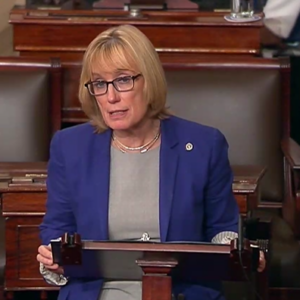Democrats in close races are trying to hide their association with the extreme abortion position of their national party. When asked about reasonable limitations to abortion or where they would draw the line, they stumble and try to change the subject. They understand the need to disguise what they support with their votes: a majority of Americans disagree with their extreme and lenient abortion policy.
Even Planned Parenthood is trying to run from the truth. In a recent press release, Planned Parenthood New Hampshire had sudden amnesia saying “abortion up to birth does not exist” and then claiming that a 24-week limitation on abortion is extreme.
Late-term abortion does exist. Just ask abortion doctor LeRoy Carhart who advertises to New Hampshire women about post-27-week abortions. It is true, later-term abortions are fortunately rare. To deny their existence, however, reinforces Planned Parenthood’s fear of the truth that Americans overwhelmingly (80 percent) oppose third-trimester abortion.
Support for later-term abortion is a net negative at the polls, which is why so many candidates are trying to hide their stances. However, there is no need to ask questions of sitting members of Congress. Just look at their voting records. Their position is clear. Right there in black and white is how they voted on the so-called Women’s Health Protection Act (WHPA) which reads more like an Abortion Provider Protection Act. It has very little, if anything, to do with protecting women’s health.
Promoted as codifying Roe, the WHPA does not. It doesn’t mention trimesters or regulating abortion during those trimesters. It doesn’t address the balance between the “government’s interest in protecting women’s health” and protecting “the potentiality of human life.”
The so-called “Women’s Health Protection Act” provides abortion providers “a statutory right” to “provide abortion services.”
The bill lists 11 health and safety regulations that do not need to be followed by abortion providers. Among the protections for abortion providers, the bill states that there can be no limitation on post-viability (late-term) abortions as long as the abortion doctor says it is necessary to protect the patient’s health.
The patient’s health is undefined, leaving abortionists, who will make a profit off late-term procedures, significant leeway without any oversight to decide what is necessary. Courts have a broad definition of health. It includes age, physical, emotional, psychological, or familial health, which means there are no bars on abortion as long as a doctor is willing to perform it. At any time in the pregnancy, and for any reason.
Under this proposal, states would not be allowed to require a continuity of care allowing abortion doctors to fly into states, perform abortions and leave, with no follow-up care for their patients. We saw the effects of this “standard of care” when Dr. LeRoy Carhart flew into Maryland to perform a late-term abortion on a 29-year-old kindergarten teacher who subsequently died following the four-day late-term abortion procedure performed by Carhart. He was unavailable for follow-up care following the abortion.
This bill would also prohibit any limitations on abortion before fetal viability and prohibit reporting requirements on why someone is seeking an abortion. A child who was repeatedly sexually assaulted could be brought in for an abortion by her abuser with no questions required. The abortion provider would not be required to provide any information to the woman that they deem medically inaccurate. It is not a straightforward bill to codify Roe. It is a bill that will make abortion more profitable for providers and less safe for women.
Anyone who voted for this bill supports unregulated abortion throughout pregnancy. You don’t need to ask them their position; you already know the truth.
Oh, and all four members of the New Hampshire delegation have voted for this bill at least once.
They can try to hide from you because they don’t want to answer the question, but they cannot run from their voting record. Democrats in these close seats may learn that come November.




